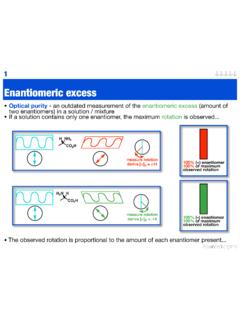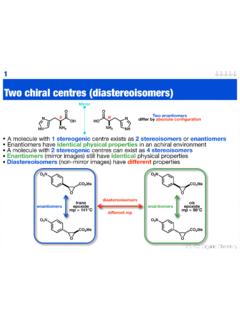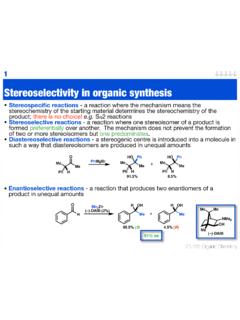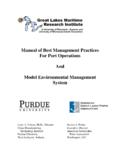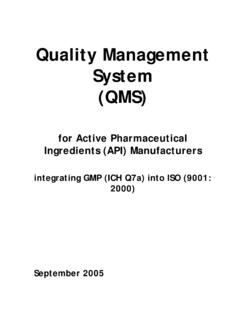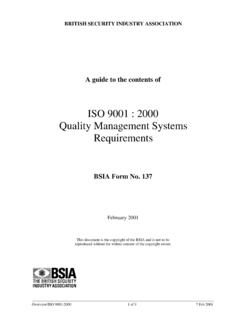Transcription of RISK MANAGEMENT FRAMEWORK - Massey University
1 1 RISK MANAGEMENT FRAMEWORK 2 RISK MANAGEMENT FRAMEWORK .. 1 INTRODUCTION .. 3 AN EFFECTIVE ENTERPRISE RISK MANAGEMENT SYSTEM .. 4 Guiding Principles .. 4 RISK GOVERNANCE .. 5 Mandate and Commitment .. 5 Roles and Responsibilities .. 5 Accountability for Risk MANAGEMENT .. 6 INTEGRATION INTO ORGANISATIONAL PROCESSES .. 6 ALIGNMENT OF RISK TO STRATEGIC OBJECTIVES .. 7 Strategic risk .. 7 Operational risk .. 7 RISK ASSESSMENT CRITERIA .. 8 Likelihood assessment .. 8 Assessment of effectiveness of controls .. 8 Consequence Assessment .. 8 University consequence matrix .. 9 Project consequence matrix .. 10 RISK TOLERANCE AND ACCEPTABILITY .. 11 TREATING AND ACCEPTING 12 RISK MONITORING AND REPORTING.
2 12 KEY RISK DEFINITIONS .. 13 3 INTRODUCTION Risk MANAGEMENT is an enabling function that adds value to the activities of the organisation and increases the probability of success in achieving our strategic objectives. It s about managing uncertainty and creating an environment where surprises are minimised. This document defines the practices adopted by the University to identify risk, in order to reduce potential negative impacts, and improve the likelihood of beneficial outcomes. The benefits of creating a practical Risk MANAGEMENT FRAMEWORK that can be applied across all part of the University include: A consistent, structured approach to identifying and managing risk Supports the achievement of the University s strategic and operational goals by managing risks that may otherwise impede success Encourages an open and transparent culture where risk discussion and awareness are supported Better decision making practices that support risk informed choices, prioritize actions and distinguish between alternative courses of action Encourages an understanding of the risk environment within which the University operates Provides assurance to the Vice Chancellor and Council that critical risks are being identified and managed effectively.
3 The MANAGEMENT of risk happens every day across all parts of the University , in many different ways. The following examples demonstrate some of the existing processes in place for how Massey mitigates risk: Health and Safety at Work: To ensure the safety and wellness of workers at Massey , there are a number of processes established to minimise workplace harm including but not limited to: hazard identification, induction, health monitoring, training and development, incident reporting and remediation. Code of Conduct: The University has both Staff and Student Codes of Conduct which define the required behaviours of staff and students of Massey University .
4 Research: Codes of Ethics and Committees to ensure application and compliance to these Codes, supervision, peer reviews, organisation structures and specialist appointments such as designated lab and facility managers, physical audits. Physical Security: Dedicated security resourcing to ensure the safety of the University community and facilities. Internal Audit: Provides assessment and review of key internal controls, and the control environment. Academic Quality: Quality of the University s academic portfolio is ensured through the CUAP accreditation process, and peer review processes. Business Continuity and emergency MANAGEMENT : Policy and FRAMEWORK govern the operational structures, activities and arrangements for emergency MANAGEMENT in line with best practice Reduction, Readiness, Response & Recovery processes.
5 The FRAMEWORK is aligned to our business outcomes and the strategies designed to achieve these outcomes. The process used to identify and manage risk at Massey University aligns with the AS/NZS ISO 31000:2009 Risk MANAGEMENT Standard. This FRAMEWORK should be read in conjunction with the University s Risk MANAGEMENT AN EFFECTIVE ENTERPRISE RISK MANAGEMENT SYSTEM For risk MANAGEMENT to be effective, it is important that University staff and stakeholders have a shared understanding of what an effective system for risk MANAGEMENT looks like, and how we will achieve this. The ISO 31000:2009 Standard recommends organisations adopt the following principles: Guiding Principles The following ten principles1 are the foundation of the Risk MANAGEMENT FRAMEWORK and are the key drivers to ensuring a consistent, fit-for-purpose approach to managing risk at the University .
6 1. Risk MANAGEMENT adds value by contributing to achievement of objectives and improving performance, for example via legislative and regulatory compliance, use of reliable and accurate information for decision-making, effective project MANAGEMENT , operational efficiency and robust governance. 2. Risk MANAGEMENT is an integral part of organisational processes. Risk MANAGEMENT is part of the responsibilities of MANAGEMENT and an integral part of University processes, including strategic planning and all project and change MANAGEMENT processes and decision making. 3. Risk MANAGEMENT is part of decision making. Risk MANAGEMENT helps decision makers make informed choices, prioritize actions and distinguish among alternative courses of action.
7 4. Risk MANAGEMENT explicitly addresses uncertainty by identifying and describing the nature and source of that uncertainty. 5. Risk practices are systematic and structured and timely, ensuring consistent, comparable and reliable results which contribute to efficiency. 6. Risk MANAGEMENT is based on the best available information including historical data, experience, stakeholder feedback, observation, evidence, forecasts, and expert judgement. 7. Risk MANAGEMENT is tailored to align with the University s external and internal context and risk profile. 8. Risk MANAGEMENT practices are transparent and inclusive, ensuring appropriate and timely involvement of stakeholders and decision makers at all levels of the organisation.
8 Involvement also allows stakeholders to be properly represented and to have their views taken into account. 9. Risk is dynamic, iterative and responsive to change. Effective risk MANAGEMENT should always consider the internal and external operating context. As external and internal events occur, context and knowledge change, monitoring and review of risk take place, new risks emerge, some change and others disappear. 10. Risk MANAGEMENT facilitates continual improvement of the organisation by implementing risk mitigations which improve the University s probability of achieving its goals, and by building capability to recognise and reduce or take managed risk. The Risk MANAGEMENT Office will periodically review and confirm that each principle continues to be satisfied and is tailored to meet the needs of the University .
9 1 AS/NZS ISO 31000:2009 Australian/New Zealand Standard: Risk MANAGEMENT Principles and guidelines. 5 RISK GOVERNANCE Mandate and Commitment The mandate for risk MANAGEMENT comes from the University Council and Senior Leadership Team (SLT). The continued engagement and support of these groups is critically important without it, risk MANAGEMENT fails. These governance groups understand this and are committed to ensuring sustainable and effective risk MANAGEMENT within the University . This commitment must be mirrored by MANAGEMENT and staff at all levels. The University Council and SLT lead this commitment by: endorsing and implementing the Risk MANAGEMENT FRAMEWORK .
10 And Policy and ensuring that these are updated to remain relevant understanding the value added by risk MANAGEMENT and communicating this to staff and stakeholders aligning risk MANAGEMENT activities with the achievement of organisational objectives ensuring legislative and regulatory compliance assigning accountabilities and responsibilities for risk MANAGEMENT at appropriate levels within the organisation ensuring independence of the Risk and Assurance team such that risks can be raised to the highest level without fear of punitive outcome creating and supporting an organisational culture which encourages transparent identification and open discussion of risks monitoring the effectiveness of the risk MANAGEMENT system and ensuring actions are taken to continually improve it.
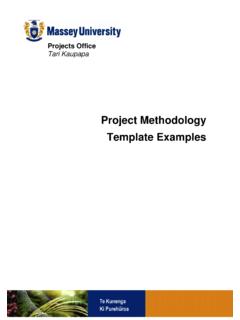
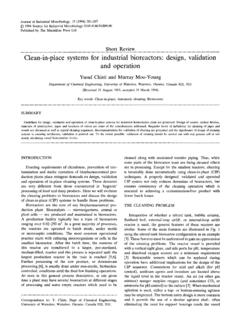
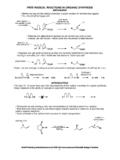
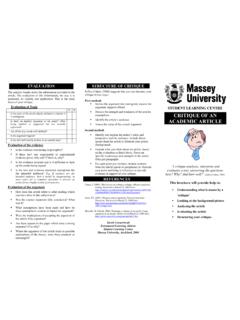
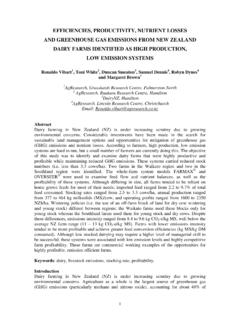
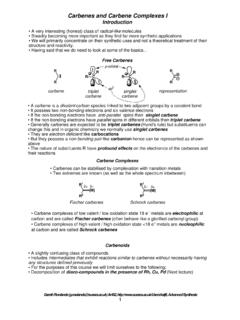
![[3,3]-Sigmatropic rearrangements - Massey University](/cache/preview/0/2/0/3/3/7/7/a/thumb-0203377a43e519e583835c335072f8b8.jpg)
